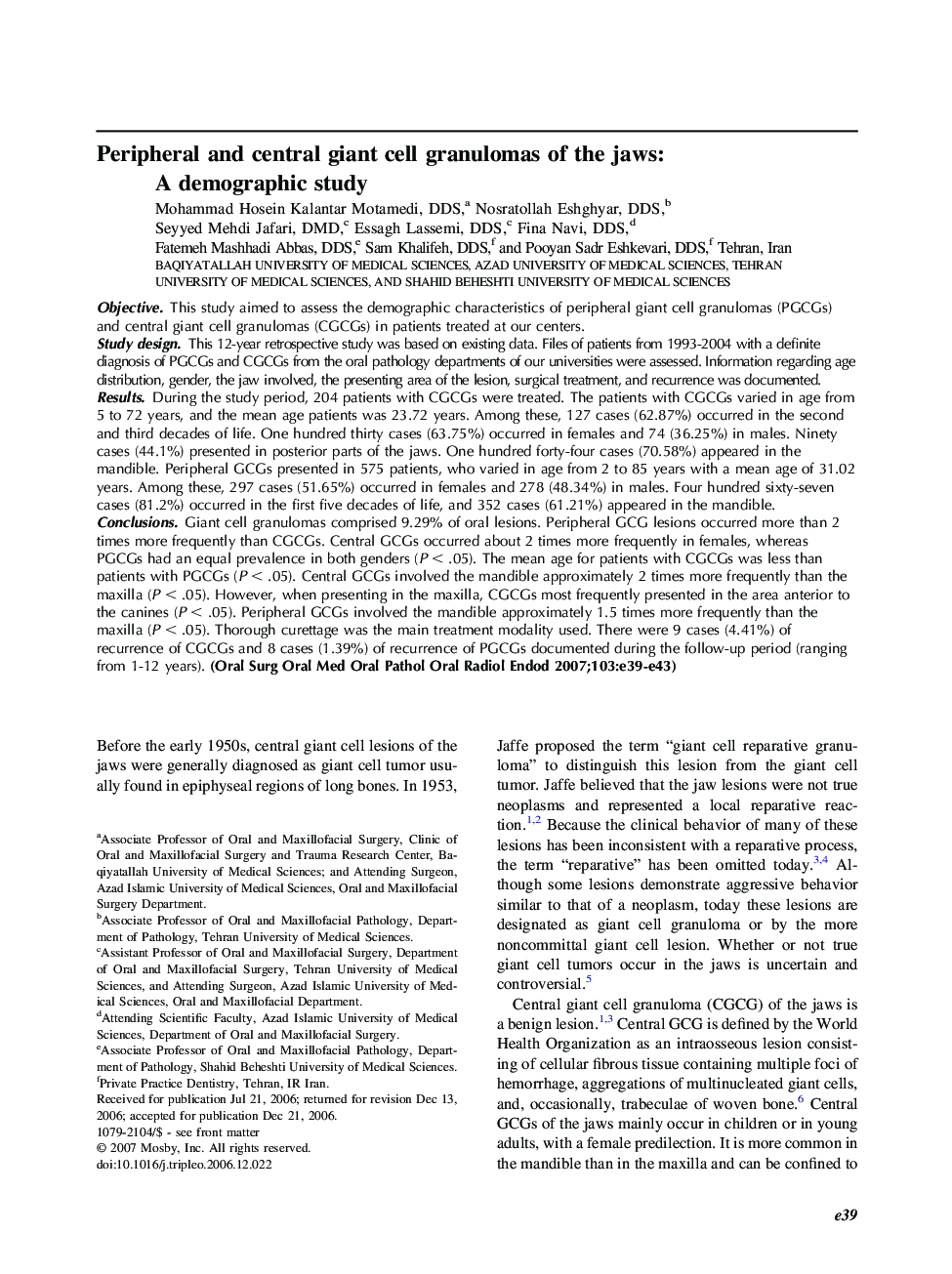| Article ID | Journal | Published Year | Pages | File Type |
|---|---|---|---|---|
| 3169382 | Oral Surgery, Oral Medicine, Oral Pathology, Oral Radiology, and Endodontology | 2007 | 5 Pages |
ObjectiveThis study aimed to assess the demographic characteristics of peripheral giant cell granulomas (PGCGs) and central giant cell granulomas (CGCGs) in patients treated at our centers.Study designThis 12-year retrospective study was based on existing data. Files of patients from 1993-2004 with a definite diagnosis of PGCGs and CGCGs from the oral pathology departments of our universities were assessed. Information regarding age distribution, gender, the jaw involved, the presenting area of the lesion, surgical treatment, and recurrence was documented.ResultsDuring the study period, 204 patients with CGCGs were treated. The patients with CGCGs varied in age from 5 to 72 years, and the mean age patients was 23.72 years. Among these, 127 cases (62.87%) occurred in the second and third decades of life. One hundred thirty cases (63.75%) occurred in females and 74 (36.25%) in males. Ninety cases (44.1%) presented in posterior parts of the jaws. One hundred forty-four cases (70.58%) appeared in the mandible. Peripheral GCGs presented in 575 patients, who varied in age from 2 to 85 years with a mean age of 31.02 years. Among these, 297 cases (51.65%) occurred in females and 278 (48.34%) in males. Four hundred sixty-seven cases (81.2%) occurred in the first five decades of life, and 352 cases (61.21%) appeared in the mandible.ConclusionsGiant cell granulomas comprised 9.29% of oral lesions. Peripheral GCG lesions occurred more than 2 times more frequently than CGCGs. Central GCGs occurred about 2 times more frequently in females, whereas PGCGs had an equal prevalence in both genders (P < .05). The mean age for patients with CGCGs was less than patients with PGCGs (P < .05). Central GCGs involved the mandible approximately 2 times more frequently than the maxilla (P < .05). However, when presenting in the maxilla, CGCGs most frequently presented in the area anterior to the canines (P < .05). Peripheral GCGs involved the mandible approximately 1.5 times more frequently than the maxilla (P < .05). Thorough curettage was the main treatment modality used. There were 9 cases (4.41%) of recurrence of CGCGs and 8 cases (1.39%) of recurrence of PGCGs documented during the follow-up period (ranging from 1-12 years).
